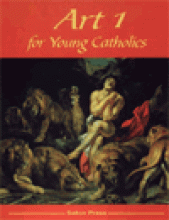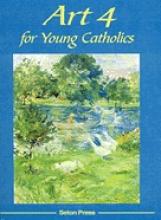No name
AntWorks Ant Habitat
AntWorks was one of the highlights of our summer natural history studies! This simple kit became a quirky centerpiece on our dinner table, engaging the entire family from the 18-month-old who insists that they are "Nants" to a 40-something daddy. AntWorks comes as a thick-walled plastic home with a stable base; this became important as the little ones spent time watching the ants. We have tried the sand-filled ant farms with dismal spills that freed too many of the inhabitants. The AntWorks home is filled with a blue gel-like substance that provides both nourishment and liquid to the ants. Accompanying literature explains that this gel was developed by NASA for experiments carried out on the Space Shuttle. One of the nicest features is that this gel is translucent, allowing observers to see completely through the tunnels. An optional illuminator is a nice addition which makes an interesting night light, but we thought that it wasn't necessary.
Ants are not included with the kit. You can either catch your own or mail in the enclosed coupon. We opted for the mail-order ants, and that boosted interest in the project for our little ones who love to receive mail. Once the ants are added to their home, the only maintenance that is needed is opening the top for a few seconds a week to allow fresh air to enter. Occasionally you will need to remove a dead ant, but our industrious insects buried their fallen comrades deep in the gel in sealed chambers. It was incredible to observe! This kit, combined with a few books from the library and a couple of diagrams and coloring pages downloaded from the Internet, provided a wonderful investigation into the life of ants for our elementary school-aged students.
Science Kit, Dimensions: 6.5"L x 5.5"W x 1.25"D
Aquinas 101
Archaeology for Kids
Archimedes and the Door of Science
Homeschoolers will appreciate Laura Berquist's helpful hints (in the introduction) for incorporating this book into your own curriculum. Keep in mind that this isn't just a Science book - it's an appropriate addition to the study of Ancient Greece and a Math Supplement as well. The complete index is useful for referring to particular topics
Around the Year Once Upon a Time Saints
Fairy tales clear the way for sanctity. They are the child's first morality play, clear-cut, no-nonsense black and white, good and evil, life and death - with a bit of fun thrown in to alleviate the pain. The lives of the saints, so filled with derring-do, gaiety, charm and courage, are all the more fantastic because the persons are real, even though they might seem right out of the pages of Hans Christian Andersen. You will not find dates and statistics here, except where they seem necessary to explain how or why a saint got to his particular spot. And I have used the embroidery of legend because I feel that under its eye-catching trivia, there is the good homespun of fact. Sometimes it has been hard to discover which facts are the real facts. In reading six books about one saint, you may have as many versions of his or her death - he may have died on the battlefield, in the arms of a wife or son, pinned to a tree with seven arrows... or a combination of all three.There was a little bit in the story of Juan Diego that bothered me (a little off on the Aztec story) and an aspect of the story of St. Nicholas that I thought pretty disturbing for young children. These little things make it probably better for a read-aloud with younger children (and really, it makes an excellent read-aloud!). A few spots made me furrow my brow or seemed just a little too silly, but these have been more than compensated for by some incredibly beautiful stories that are really well done. One story that particular stood out for me was the one St. Paul Miki and St. Charles Lwanga. It has an absolutely stunning and incredibly appropriate explanation of the martyrs for children. Fabulous stuff and my children and I enjoyed the book very much. Oh yes, and Ben Hatke's illustrations (he also illustrated Angel in the Waters by Regina Doman) are wonderful!
Art 1 for Young Catholics
This course follows the liturgical year. It begins with Advent. There are a total of forty-four projects. Each one has an explanation.
***EXAMPLE OF LESSON*** For example the next one we are going to do is "The Grotto at Lourdes" on pg 12. It begins with "Celebrate - February 11, OUR LADY OF LOURDES. February 11 is the anniversary day of the first apparition of Our Day at Lourdes, France. The Blessed Virgin Mary appeared to a 14 yr old girl named Bernadette Soubirous eighteen times between Feb 11 and July 16, 1858. On March 25, 1858, Bernadette asked the beautiful lady to identify herself. Mary answered, "I am the Immaculate Conception." Mary also asked for penance and prayer. Bernadette was told by Our Lady to have a chapel built there and to have people come in precessions. A miraculous spring of fresh wat4er came forth from the ground and to this day, many people have been cured by the healing waters that come from the spring.
The lesson then has suggestions for the parent to find more info on the topic. Then the project is listed. In this case we need Pattern # 10, glue, scissors, green and red tissue paper, brown, green and yellow construction paper, crayons or markers and gold glitter. The instructions are giving in steps. 1. Color the picture of the Blessed Virgin Mary. Drape glue on the halo and roses at Mary's feet. Sprinkle with glitter. 2. Cut out patterns for the grotto, oval and vine. 3. Place grotto pattern on brown paper, trace and cut one. 4. Place oval pattern on yellow paper, trace and cut one. 5. Place vine pattern on green paper, trace and cut two. 6. Set grotto pieces aside. Glue oval in the center and glue the two vines along the sides. 7. Cut layers of green and read tissue paper into 1 1/2" X 1 1/2" squares. You will need more green than red. 8. Take each individual red square and roll into a loose ball. Glue them here and there on the vines to look like roses. 9. Take each individual green squares and slightly crumble it. Glue them to vine around roses to look like leaves. 10. Cut out figure of Mary and glue it in center of the oval. 11. Using a pen, carefully print OUR LADY OF LOURDES across the top of the grotto. Display your artwork. *************
We are excited about this lesson because we just set up a table to use as a home altar and so far only have a few votive candles. We want to save for a nice stature of the Sacred Heart and Immaculate Hearts. So until then the Grotto the kids make will grace our little table.
The other lessons cover all twelve months. There are projects for Lent, Easter, St Pat's Day, Pentecost, Ascension Thursday, Trinity Sunday, Assumption of the Blessed Virgin Mary, Feast of All Saints and more. We have really enjoyed it. I have no artistic ability and this helps me to give my children art that looks like art ;-). I have also learned alot about the liturgical year from it. Also Cari and David have been able to do it together. I plan on using it again next year for projects for liturgical feasts. It really is a wonderful book.
Art 4 for Young Catholics
What could be better than a well-planned and well-organized Catholic art textbook written by internationally-known Catholic artists who are also art historians and professors? This is the textbook! From the introduction by the authors: "The rules used here have been the time-tested tools used by artists for centuries and are based on natural law and common sense. Once acquired, these skills are not only transferable to other disciplines but also foster genuine appreciation and discernment in the field of art and of beauty in creation."
Seton's Art 4 for Young Catholics includes 36 weekly lessons for upper-elementary aged children. The lessons build upon one another, with a few lessons carrying over from one week to the next. Unlike some of the other books in the Seton art series, the lessons do not follow the liturgical year and could be used in an order other than the way they appear in the text. Each lesson plan includes the objective of the lesson, a detailed list of required materials that are easily and inexpensively available, and step-by-step instructions with many illustrations to show the student and teacher what is expected. Art history and appreciation topics are featured in several lessons with thirteen full-color plates and numerous black-and-white plates for careful study. Topics of instruction range from line, contour, texture, color, symbolism, contrast, dimension, symmetry, to balance and design.
Although the book is sold as the text for Seton's 4th grade, it is very appropriate for children up through the 6th grade for a multi-level homeschool class or co-op. I've been using this course this year very successfully with an art-talented 3rd grader and an art-challenged 6th grader, and I'm thrilled with it. Not only are my students developing basic art skills and basic art sense, they are also being introduced to traditional art works featuring Catholic subjects.
Art Fraud Detective: Spot the Difference, Solve the Crime!
This is an exciting and fun art supplement that kids are sure to love (makes a great gift for Christmas or a birthday). There are three main parts to the book. First is an introduction which explains a problem the art museum is having with forgeries. Several gangs of artists have copied original works, but made very slight changes to them. The object of the book is to identify who is responsible for the various forgeries by looking carefully for very specific clues.
The rest of the book is split into two books on top of each other. The upper part is composed of the forgeries - which look like real art until you look very closely (and thus the magnifying glass). A small symbol on the forgery will tell you how many changes the forger made to the original work. By studying the lower book - which is an art catalog with prints of the real paintings, the reader will discover the differences and solve the crime. The catalog includes information about the type of painting; the artist and when he lived; and a brief story about the painting and its subject. There are a total of thirty-four paintings and there is a complete answer key in the back of the book.
What a creative way to get kids interested in art and...fear not! You'll find no twaddle here. I was very pleased to see the practice in attention-to-detail that this book requires and encourages. It's enjoyable enough that my daughter has enjoyed working through it with friends on sleep-overs. There is one picture that jumps out at me as being a little on the shocking side. It's a picture of a very ugly old lady in a very low-cut dress. The book explains that it is a caricature of older women who try to dress younger but really make themselves look ridiculous. I don't really like the picture, but I don't think it really detracts from the book (it also offers the idea of additional purpose in art and an unusual way of making a point).
A magnifying glass on a ribbon is bound in
Art Masterpieces: A Liturgical Collection
We enjoy CHC products a great deal because they fit naturally into our homeschool and family life. This little art appreciation course is no exception.
Arranged around the liturgical year, the package includes ten beautiful 8" x 10" full color, masterpiece reproductions featuring ten different artists (e.g. Michelangelo, Botticelli, Rembrandt, da Vinci) and a 25 page art appreciation guide. The guide provides excellent suggestions for teaching art appreciation in general (those who are familiar with the Charlotte Mason approach will be right at home) as well as specific suggestions for individual masterpiece focusing on content, line, color, pattern, and design. The information gleaned from this guide can easily be applied to other works of art you may already have in your home too.
In addition to the general use section, the guide devotes one page per month to the study of a particular masterpiece. A monthly theme is suggested along with ideas for integrating the study of the particular artwork into family life. Like other CHC products, this package has incorporated Catholic ideals into a program that is enlightening and edifying while remaining something that real families can easily work into their daily school and family life.
When we first received our package I immediately put all of the pictures into a frame, with the June masterpiece on top. I made a pocket on the cardboard backing to hold the booklet and we have weekly discussions about the picture that now hangs in our living room. Occasionally I take the booklet out of the pocket behind the picture and flip to some discussion prompts about line, form, etc. The children enjoy the looking at all the details in the picture while I ask questions and my husband is delighted to have a variety of religious pictures to brighten our room.









